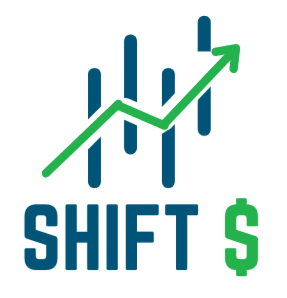
Related News
Digital Transformation – Healthcare
Digital Transformation – Mobility Support
Data Privacy Program – Financial Organization
Leveraging Financial Information – Generative AI
The Need for Change
A mobility support company faced a critical business challenge: accurately setting lease premiums and predicting end-of-lease market values to maintain profitability. Their entire operation depended on this precision. The company’s business model involved acquiring new vehicles directly from manufacturers, leasing them for predetermined periods, and then selling them in the secondary market to generate profits. This dual-revenue approach required exceptional forecasting precision at both entry and exit points in the vehicle lifecycle.
However, their legacy system relied on disconnected Excel spreadsheets and complex macros to manage vast datasets of vehicles, components, and pricing histories. Each vehicle manufacturer, make, model, variant, and corresponding parts inventory had its own isolated spreadsheet, creating data silos that inhibited comprehensive analysis. The calculation processes relied on lengthy, intricate macros that were difficult to maintain and prone to errors. This cumbersome process consumed ten days every month, with even minor business logic changes requiring macro reprogramming by specialized staff.
As market dynamics became increasingly volatile and competitive pressures mounted, the company recognized that this manual, fragmented approach was unsustainable. Seeking transformation, they aimed to harness cloud computing to slash processing time by 70% while enhancing accuracy, analytical capabilities, and business agility in a rapidly evolving mobility market.
The Blueprint
We tackled a sophisticated ecosystem where ten interdependent calculation engines operated simultaneously, incorporating regression and statistical modeling requirements. These engines weren’t merely parallel systems—they formed an intricate web of interdependencies where outputs from one calculation became crucial inputs for others. This complexity demanded a holistic architectural approach rather than piecemeal modernization.
The business also needed robust scenario simulation capabilities with persistent storage to compare potential market outcomes under various conditions. These simulations were vital for risk management, allowing decision-makers to stress-test their pricing models against multiple economic scenarios. Working closely with subject matter experts across finance, operations, and analytics teams, we designed intuitive interfaces tailored to specialized workflows while maintaining the sophisticated calculations that drove business value.
Data acquisition was revolutionized through full automation via secure file transfers and APIs from manufacturer databases, market pricing services, and internal systems, eliminating manual touchpoints and data entry errors. Once processed through validation routines, data flowed into a cloud-based relational database optimized for analytical queries, where business users could conduct comprehensive simulations across all processes without waiting for IT support.
The labyrinth of legacy macros—some containing thousands of lines of code developed over years—was replaced with streamlined, cloud-native ETL processes documented according to modern standards. This transformation dramatically improved maintainability for the data engineering team and created a foundation for continuous improvement. By implementing a secure low-code platform for user interfaces, we significantly reduced development timelines and investment while enhancing usability for business users with varying technical proficiency levels.
The Big Win
The cloud migration delivered transformative results that exceeded expectations across multiple dimensions:
- Monthly processing cycles plummeted by 70%, from ten days to just three, freeing valuable business resources and accelerating decision-making. This efficiency gain allowed pricing analysts to focus on value-added activities rather than data manipulation, creating a competitive advantage in market responsiveness.
- Advanced forecasting capabilities were seamlessly integrated, incorporating machine learning algorithms that analyzed historical price trends across multiple markets and vehicle categories. These enhancements substantially mitigated capital investment risk through improved predictive accuracy, reducing forecast variance by 35% compared to the legacy system.
- End-to-end process automation eliminated over 75 manual intervention points, reducing error rates by 92% and improving data integrity. This automation extended beyond basic data processing to include exception handling, anomaly detection, and automated alerting for unusual market movements that might impact vehicle valuations.
- Previously unmanageable simulation versions—which had been stored across dozens of individual files with inconsistent naming conventions—were consolidated into a unified repository with version control and audit capabilities. This provided unprecedented visibility and control for business stakeholders, who could now trace decision rationales and compare scenarios across time periods and market segments.
- This success story catalyzed additional cloud transformation initiatives across the enterprise, establishing a new paradigm for technology-enabled business growth. The mobility company has since initiated three additional cloud migration projects, including a customer-facing portal that leverages the same modernized data foundation to provide enhanced services to fleet managers.
The transformation fundamentally changed the company’s relationship with technology, shifting from a necessary cost center to a strategic enabler of business innovation and competitive differentiation in the mobility services marketplace.




